 Abraham Lincoln
If given the truth, the people can be depended upon to meet any national crisis...
Abraham Lincoln
If given the truth, the people can be depended upon to meet any national crisis...
 Guildford news...
for Guildford people, brought to you by Guildford reporters - Guildford's own news service
Guildford news...
for Guildford people, brought to you by Guildford reporters - Guildford's own news service
Through Time: Guildford Products Reached All Parts of Britain and The World
Published on: 16 Sep, 2013
Updated on: 17 Sep, 2013
Martin Giles discovers a Guildford connection, a reminder of our town’s industrious past, in a remote corner of Scotland…
Having explored the beautiful and fruitful walled garden we found a disused but well preserved stable block. A huge pair of bellows used for the smithies’ furnace, close by, were propped against the wall and the whole thing had the air of a Marie Celeste, as if the horses, grooms and stable boys had only disappeared within the previous few days.
Standing in another corner, rather incongruously, was a lathe. I glanced at the manufacturer’s plate and was delighted to see that it was made by Drummonds of Rydes Hill, Guildford and found nearly 500 miles away in a country estate near St Andrews in Fife, Scotland.
The discovery brought to mind February 1976. I was a young soldier in Belize away for the first time away from the confines of Western Europe and aware of our distance from home.
Belize in Central America was certainly different as we could tell immediately during our descent from the RAF VC10 when the warm moist tropical air hit us, to the glimpses of howler monkeys in the trees, on our short journey from the airport to the camp.
In our first foray into Belize City, which reminded us a bit of a Wild West town, we saw a very small fire station. Curious about everything in this alien place a few of us peered through a dusty window in the upper door to see an ancient fire engine. It looked like a museum piece of 1930s vintage but appeared to still be in use.
“It’s a Dennis!” I said excitedly. “Made in Guildford.” The sight not only a huge coincidence but to me it was a tangible reminder of home, so far away.
My comrades were not so impressed. “Blimey it’s ancient!” said one with a barely concealed lack of interest. “Wonder what the beer is like here?”
Guildford is not widely known in historical terms as a manufacturing town, but industry was no stranger here from the late 1800s onwards. There is, of course. John Dennis Coach Builders and Alexander Dennis based at Slyfield today.
Dennis Bros is probably the most famous and biggest factory in Guildford’s history, responsible for the production of a wide range of specialist motor vehicles. It remains best known for its fire engines, but in its time it also produced dust carts, buses, lawn mowers and, during World War Two, Churchill tanks.
Drummonds, like Dennis Bros, was formed by two brothers, one of whom had paintings exhibited at the Royal Academy, was a major local employer and its lathes were at the leading edge of the technology of their day.
Britain, with its empire and leading position in the world, ensured that products from both companies were well distributed right across the globe. A Drummonds lathe must have been set up on every single continent, even the Antarctic, thanks to Captain Scott who equipped his expedition with one.
Both companies obtained many government contracts during both world wars which must have been in major factor in their expansion. Sadly, both companies suffered in the general decline of manufacturing industries in post war UK and could only survive at all, in much reduced form, by combining with other companies.
For those interested, the example of a Drummonds lathe I discovered (see above) in the Cambo Estate, near St Andrews, Fife, is, judging by information found on the internet, an early model, a 3.5inch flat bed lathe made between 1902-1912.
Have you found any examples of Guildford products in remote parts? Perhaps you can add further snippets of the less well known history about Dennis Bros, Drummonds, or other Guildford manufacturing firms? If so, please use the ‘Leave a Reply’ service below …
Responses to Through Time: Guildford Products Reached All Parts of Britain and The World
Leave a Comment Cancel reply
Please see our comments policy. All comments are moderated and may take time to appear. Full names, or at least initial and surname, must be given.Recent Articles
- I Will Not Be Voting in the County Council Election Today
- Home-to-School Transport Refused
- Devolution: Ministry Asks for Clarification of How £5 billion Debt Will Be Managed
- Website Maintenance
- Letter: The Younger Generations Might Learn from Our Experience
- Final Steam Train Signalled by Farncombe, Petersfield and Haslemere Signal Boxes
- New Toucan Crossing on Woking Road to Facilitate Weyside Urban Village Project
- Updated: Honesty Questioned as Waverley Scraps Ground Maintenance Deal
- Letter: Please Send Nominations for Design Awards
- Notice: Do You Need Nature on Prescription?


Recent Comments
- John Lomas on New Toucan Crossing on Woking Road to Facilitate Weyside Urban Village Project
- J Heaphy on Devolution: Ministry Asks for Clarification of How £5 billion Debt Will Be Managed
- Peter Hyde on Devolution: Ministry Asks for Clarification of How £5 billion Debt Will Be Managed
- Ricky Sonn on Wildlife Group Plans To Release Beavers To Revive Surrey Wetlands
- David Roberts on Letter: The Younger Generations Might Learn from Our Experience
- Jim Allen on Devolution: Ministry Asks for Clarification of How £5 billion Debt Will Be Managed
Search in Site
Media Gallery
Dragon Interview: Local Artist Leaves Her Mark At One of England’s Most Historic Buildings
January 21, 2023 / No Comment / Read MoreDragon Interview: Lib Dem Planning Chair: ‘Current Policy Doesn’t Work for Local People’
January 19, 2023 / No Comment / Read MoreA3 Tunnel in Guildford ‘Necessary’ for New Homes, Says Guildford’s MP
January 10, 2023 / No Comment / Read More‘Madness’ for London Road Scheme to Go Ahead Against ‘Huge Opposition’, Says SCC Leader
January 6, 2023 / No Comment / Read MoreCouncillor’s Son Starts Campaign for More Consultation on North Street Plan
December 30, 2022 / No Comment / Read MoreCounty Council Climbs Down Over London Road Works – Further ‘Engagement’ Period Announced
December 14, 2022 / No Comment / Read MoreDragon Interview: GBC Reaction to the Government’s Expected Decision to Relax Housing Targets
December 7, 2022 / No Comment / Read MoreHow Can Our Town Centre Businesses Recover? Watch the Shop Front Debate
May 18, 2020 / No Comment / Read More




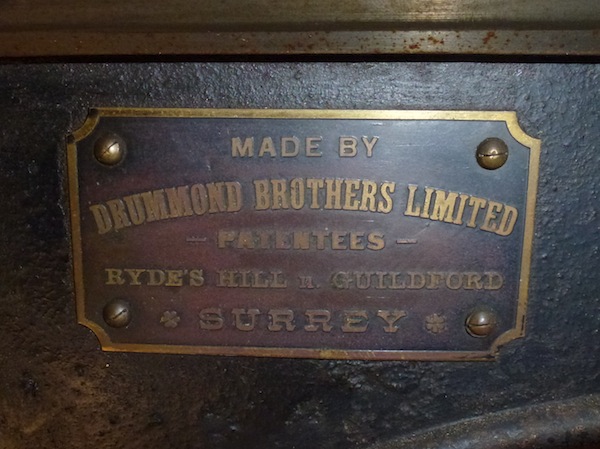
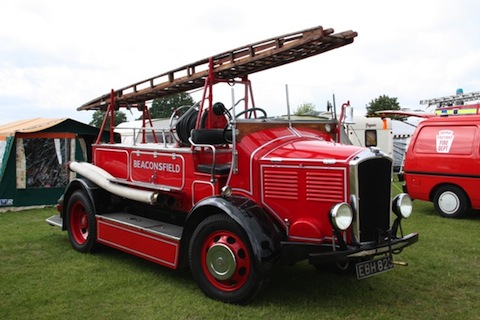
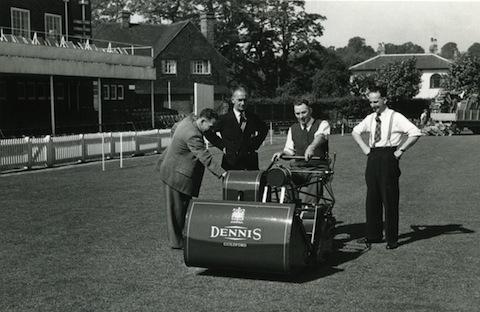
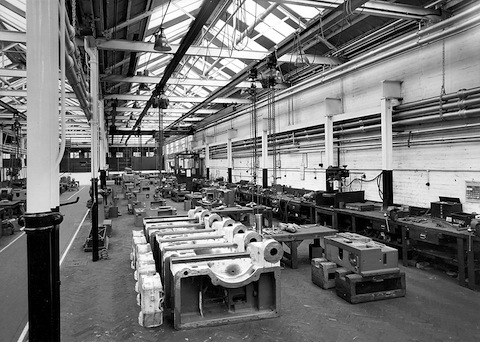

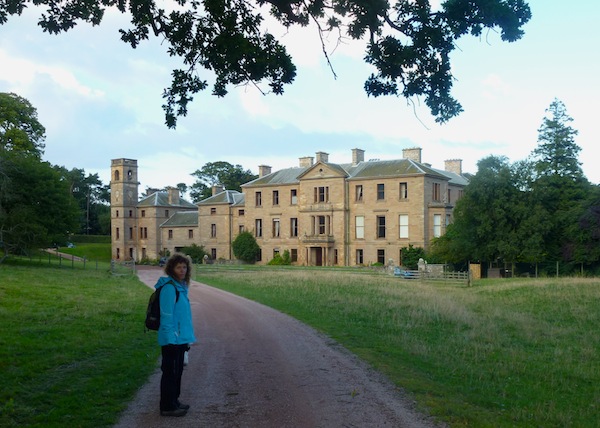







David Rose
September 16, 2013 at 11:45 pm
I know someone who has a Drummonds lathe in his garage – about a quarter of a mile from where Drummonds was in Broadstreet.
Then there are the enthusiasts who have restored Dennis buses and own lawnmowers.
As a plug, next month (October) I am giving another of my illustrated lectures at Guildford Institute. Four in total every Tuesday morning – Uncovering Guildford’s History Part II. This time they are on picture postcards of Surrey villages, lost shops part II, breweries and pubs, and local industry.
The latter will feature Dennis Bros, Drummonds as well as Nelco of Shalford and other engineering firms such as Warner Engineering and Weyside Engineering.
Indeed, light engineering was once found throughout Guildford. There was a training school for school leavers at Slyfield – the Guildford & District Engineering Training Association. Think that’s what it was called, known as GADETA.
Anyone have any memories of their engineering training there?
Robert W.Mills
September 25, 2014 at 3:44 pm
I was one of the 65 entrants in GADETA’s third session (September 1970).
I was recently given a clipping from the ‘Surrey Advertiser and Country Times’ about them. It also has a photo of the entrants and lists the companies they came from.
Robert (Barney) Rudge
April 8, 2015 at 8:34 pm
Only just found this thread so I hope people are still reading it.
I was also part of the third session, with about 11 new Dennis apprentices – GATETA. Probably the best engineering training centre in the world.
We went in as boys and came out as engineers, all in 12 months.
They talk about apprenticeship schemes today, but few would rival GADETA.
Robert W.Mills
July 17, 2015 at 12:34 pm
@Barney, please email me at RobertW.Mills@fsmail.net so we can chat about ‘old times’.
Paul Hopkins
September 14, 2016 at 11:35 am
In reply to David Rose.
I have just read your article and thought I would reply.
I served my apprenticeship with Weyside Engineering, the first year was at GADETA in Slyfield Ind Est in 1980 before moving on to work at their factory in Middleton Industrial Estate, Guildford.
I then moved to McLaren Racing in 1987 where I still am.
If I can help in any way please contact me.
Brian Jacobs
September 3, 2021 at 6:43 pm
Isn’t Google a wonderful thing? I was just trying to find out which building GADETA was housed in on the Slyfield Estate and I’ve stumbled across The Guildford Dragon NEWS.
I attended GADETA from 1981-1982.
Bernard Parke
September 17, 2013 at 8:59 am
Those were the days when it was said we were at the dawn of a New Elizabethan Age.
A period to equal the time of Raleigh and Drake.
We led the world in building the first jet airliner and our technology put most of the world in the foot hills of progress.
On a lighter note when we were making the popular Morris Minor, BMW was just making bubble cars.
Even the Japanese decided, with some degree of urgency, to copy a Parker fountain pen.
That time was certainly a false dawn.
John Lomas
September 18, 2013 at 10:20 pm
The Drummond lathes and gear hobbers and cutters from the ’50s and ’60s were used by british car manufacturers to make parts.
They were, in the main, designed as basically one dedicated job machines.
Whereas the earlier example, pictured above, is a more general use machine.
Adam Carver
December 12, 2015 at 8:52 pm
I was at Gadeta in 1981 as an electronics trainee.
It led to me becoming an RAE apprentice the following year.
Brian Newman was our instructor and it was run by a Mr Skinner. Fond memories. Sadly now closed down as is the RAE!
Regards to all who remember me and thanks for the oppertunities that this first step gave a young 16- to 17-year-old.
I now live in Cornwall.
Brian Newman
August 11, 2017 at 8:43 am
I remember Adam Carver!
I live in a small village near Bude and found to my amazement that one of my drinking buddies in my local (The Bridge Inn) was an old Gadeta lad also an old Weyside apprentice. It would be great to catch up. Perhaps Adam could ping me a message at: glassfroster@gmail.com.
Chris Cox
July 1, 2016 at 9:38 am
I was at GADETA 1980 – 1981.
What a fantastic foundation to my career although probably didn’t appreciate it at the time.
Milling, turning, bench fitting etc. All good hands on stuff.
I remember how most of the lads turned up at the start aged 16 on their mopeds and as the year progressed, advanced to larger bikes as they turned 17. I eventually arrived on a white and red RD250… “king of the road” and all that. Halcyon days.
35 years on I am now a Permanent Way Engineer designing railways mostly in the UK (Edinburgh tram, Thameslink depots, HS2 etc) and some in Europe (Copenhagen Ring 3). Thanks for the start GADETA gave me.
Richard Whitehead
June 24, 2020 at 8:04 am
I’m a little late to the party, but I was at GADETA in 1980. I’d pretty much given up on academia, as A levels bored me.
I have to echo the comments about how foundational it was to my career. Since then, I’ve gone on to be a recognized expert in computer networking, I’m proficient in a couple of programming languages, and have served as a Chief Technology Officer in a couple of US Silicon Valley start-ups. I hold three patents, and have chaired three industry working groups.
But hands-down, the most profound benefit, was the all-round engineering skills I garnered, which have given me almost 40 years of joy, restoring vintage motorcycles, and being “Daddy, fixer of all things”.
Graham Johnson
July 16, 2024 at 10:37 am
I was at GADETA from September ’79 for a the first year of my Apprenticeship with Storno Radio Comms. Absolutely superb grounding for my electronics engineering career. It’s a shame the facility isn’t there any longer.